Unlocking Power: What Makes a Leading Crankshaft Manufacturer Stand Out?
The internal combustion engine, for all its complexity, relies on a surprisingly simple yet critically important component to convert linear motion into rotational power: the crankshaft. It's the very heart of the engine, enduring immense forces and operating at incredibly high speeds. Frankly speaking, without a perfectly engineered and manufactured crankshaft, an engine simply wouldn't run, or at least not efficiently or reliably. This brings us to the pivotal role of a crankshaft manufacturer – a specialist entity whose expertise dictates the performance, longevity, and overall quality of countless machines, from the smallest lawnmower to the largest marine engine.
Have you ever stopped to consider the sheer complexity hidden within your engine's core? The crankshaft isn't just a piece of metal; it's a marvel of engineering, requiring meticulous design, material selection, and manufacturing processes. The demands placed upon it are extreme: it must withstand torsional stresses, bending moments, and fatigue, all while maintaining precise balance and alignment. This is why the choice of a crankshaft manufacturer is paramount for anyone involved in engine design, production, or even aftermarket replacement.
The Heart of the Engine: Precision Crankshaft Manufacturing
The journey of a crankshaft from raw material to a finished, high-performance component is fascinating and incredibly intricate. It begins with the selection of the right material, which is often high-strength steel alloys, but can also include cast iron or, for extreme performance applications, billet steel. Each material offers a different balance of strength, ductility, and machinability, chosen based on the engine's intended application and performance requirements.
Once the material is chosen, the manufacturing process typically involves one of two primary methods: forging or casting. Forging, which involves shaping the metal through hammering or pressing at high temperatures, yields a stronger, more durable crankshaft with a favorable grain structure. This method is often preferred for high-performance or heavy-duty applications. Casting, on the other hand, involves pouring molten metal into a mold, which can be more cost-effective for mass production and less demanding applications. Interestingly enough, advancements in casting technology have significantly improved the quality of cast crankshafts, making them suitable for a broader range of engines today.
Following the initial shaping, the crankshaft undergoes a series of precision machining operations. This includes turning, milling, grinding, and drilling to achieve the exact dimensions, surface finishes, and tolerances required. Every journal, every crankpin, and every counterweight must be machined to within microns of accuracy. It's worth noting that even the slightest deviation can lead to imbalance, vibration, and premature wear. After machining, heat treatment processes like induction hardening or nitriding are applied to enhance surface hardness and wear resistance, crucial for the longevity of the bearing surfaces.
Finally, the crankshaft is meticulously balanced. This is a critical step, as any imbalance can cause severe vibrations, leading to engine damage and reduced efficiency. Modern precision crankshaft manufacturing facilities use highly sophisticated dynamic balancing machines to ensure that the crankshaft rotates smoothly at all speeds. In my experience, the difference between a good engine and a great one often boils down to the crankshaft's integrity and balance. A truly expert crankshaft manufacturer understands that every step, from material selection to final inspection, contributes to the ultimate performance of the engine.
What Distinguishes a Top-Tier Crankshaft Manufacturer?
Not all crankshaft manufacturers are created equal. Identifying a leading player in this specialized industry requires looking beyond just the product itself and delving into their operational philosophy and capabilities. One of the most critical differentiators is an unwavering commitment to quality control. This isn't just about final inspection; it's about integrating rigorous quality checks at every stage of the manufacturing process. This often involves advanced testing methods, such as magnetic particle inspection for cracks, ultrasonic testing for internal flaws, and coordinate measuring machines (CMM) for dimensional accuracy. Certifications like ISO 9001, IATF 16949 (for automotive), or AS9100 (for aerospace) are strong indicators of a manufacturer's dedication to world-class quality management systems.
Another hallmark of a top-tier crankshaft manufacturer is their investment in research and development (R&D) and innovation. The automotive and industrial sectors are constantly evolving, demanding lighter, stronger, and more efficient components. Leading manufacturers are not just reactive; they are proactive, exploring new materials, advanced manufacturing techniques (like additive manufacturing for prototypes or specialized geometries), and improved surface treatments. They often collaborate with engine designers and material scientists to push the boundaries of what's possible.
Furthermore, the ability to offer custom crankshaft production is a significant advantage. While many manufacturers produce standard crankshafts for popular engine models, the best ones have the flexibility and engineering prowess to design and produce bespoke crankshafts for unique applications, racing engines, or specialized industrial machinery. This requires deep engineering knowledge, advanced CAD/CAM capabilities, and a willingness to work closely with clients on highly specific requirements. This level of customization speaks volumes about their technical depth and customer-centric approach.
Beyond the technical aspects, strong customer service and technical support are vital. A reputable manufacturer doesn't just sell a product; they provide expertise and partnership. This includes offering design consultation, troubleshooting assistance, and responsive after-sales support. Finally, increasingly, a top crankshaft manufacturer will demonstrate a commitment to sustainability, adopting environmentally friendly practices in their operations, from waste reduction to energy efficiency. This not only benefits the planet but also often indicates a well-managed and forward-thinking organization.
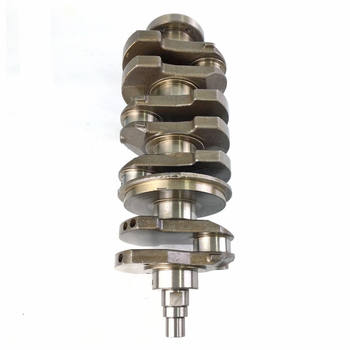
Navigating the Challenges and Embracing Innovation
The crankshaft manufacturing industry, like many others in the heavy industry sector, faces its share of challenges. Fluctuations in raw material costs, particularly for steel and other alloys, can significantly impact production expenses. Supply chain disruptions, as seen in recent years, also pose considerable hurdles, affecting lead times and material availability. Environmental regulations are becoming increasingly stringent, pushing manufacturers to invest in cleaner processes and reduce their carbon footprint. Moreover, the global competitive landscape means that efficiency and cost-effectiveness are constantly under scrutiny.
Despite these challenges, or perhaps because of them, the industry is a hotbed of innovation. One significant area of development is in advanced materials science. Engineers are continually exploring new alloys that offer superior strength-to-weight ratios, better fatigue resistance, and improved wear characteristics. This allows for the production of lighter, yet more durable, crankshafts, which is crucial for improving fuel efficiency and reducing emissions in internal combustion engines. Another exciting frontier is the application of advanced coatings and surface treatments, which can further enhance the wear resistance and reduce friction on bearing surfaces, extending the crankshaft's lifespan and improving engine performance.
The integration of Industry 4.0 technologies is also transforming the manufacturing floor. Automation, robotics, and artificial intelligence are being used to optimize production processes, improve precision, and reduce human error. Predictive maintenance, enabled by sensors and data analytics, helps prevent costly downtime by identifying potential issues before they escalate. Many experts agree that the future of automotive and industrial power relies heavily on these ongoing innovations, and a forward-thinking crankshaft manufacturer is at the forefront of adopting these technologies to stay competitive and deliver superior products.
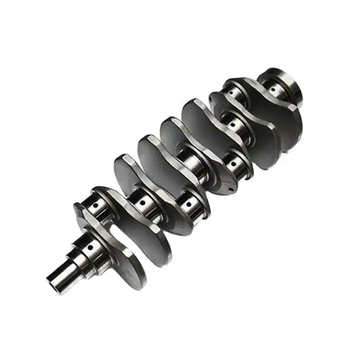
Choosing Your Ideal Crankshaft Manufacturer
Selecting the right crankshaft manufacturer is a critical decision that can have long-term implications for your product's performance and your business's reputation. It's not a choice to be made lightly. The first step is to clearly define your needs. Are you looking for high-volume production of standard components, or do you require specialized, low-volume custom crankshaft production for a niche application? Understanding your specific requirements will help narrow down the field.
Next, consider the manufacturer's experience and reputation. How long have they been in business? What industries do they primarily serve? Look for testimonials, case studies, and industry recognition. A manufacturer with a proven track record in your specific sector is likely to understand your challenges and deliver appropriate solutions. Capacity and lead times are also crucial factors. Can they meet your production volume requirements within your desired timeframe? It’s always wise to inquire about their typical lead times for both prototyping and full-scale production.
While cost is always a consideration, it shouldn't be the sole deciding factor. A cheaper crankshaft might end up costing you more in the long run due to premature failure, warranty claims, or compromised engine performance. Focus on value: the balance between quality, reliability, and price. Always request detailed quotes and compare not just the price, but also the specifications, quality assurance processes, and after-sales support included.
Finally, don't underestimate the importance of communication and partnership. A good crankshaft manufacturer will be transparent about their processes, responsive to your inquiries, and willing to collaborate closely on design and technical challenges. They should be seen as an extension of your own engineering and production team, working together to achieve the best possible outcome. Visiting their facilities, if possible, can also provide invaluable insight into their operations, technology, and commitment to quality.
The Future Landscape for Crankshaft Manufacturers
While the automotive industry is experiencing a significant shift towards electrification, it's important to recognize that the demand for crankshafts is far from diminishing. Internal combustion engines will continue to power a vast array of vehicles and machinery for decades to come, especially in heavy-duty transport, marine applications, industrial power generation, and off-highway equipment. These sectors rely heavily on robust, durable crankshafts that can withstand extreme conditions and deliver consistent power.
The future for a leading crankshaft manufacturer will likely involve a dual focus: continuing to innovate within the realm of traditional internal combustion engines, making them more efficient, lighter, and cleaner, while also exploring new opportunities. This might include developing components for hybrid powertrains or even leveraging their precision manufacturing expertise for entirely new applications outside of traditional engines. The emphasis will remain on efficiency, durability, and the ability to produce components with ever-increasing levels of precision and material integrity.
Ultimately, the role of the crankshaft manufacturer remains indispensable. They are the silent architects of power, ensuring that the heart of countless machines beats reliably and efficiently. Their dedication to precision, quality, and innovation is what drives progress across industries that depend on robust mechanical power.
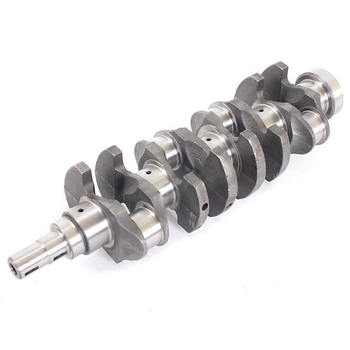
For more detailed information, please visit our official website:Crankshaft manufacturer
About the author: Dr. Evelyn Reed is a distinguished mechanical engineer with over two decades of experience in powertrain component design and manufacturing. Her expertise spans advanced materials, precision machining, and quality assurance within the automotive and heavy industrial sectors. She is passionate about the intricate balance of engineering and artistry required to produce high-performance engine components, making her a trusted voice in the field of crankshaft technology.
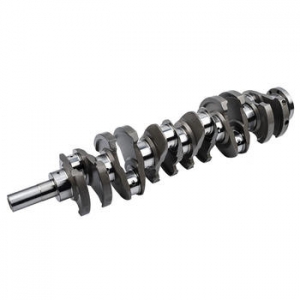 Trusted Crankshaft company Man
Trusted Crankshaft company Man
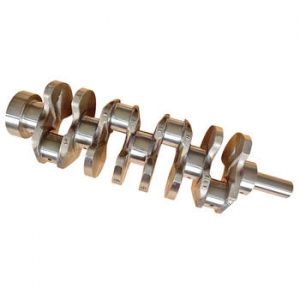 Professional Crankshaft Manufa
Professional Crankshaft Manufa
 Trusted Crankshaft Supplier: W
Trusted Crankshaft Supplier: W
 Trusted Crankshaft Manufacture
Trusted Crankshaft Manufacture
